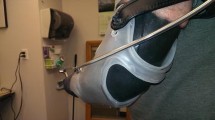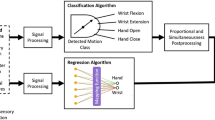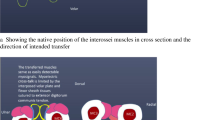Abstract
Purpose of Review
The complexity of the human extremity, particularly the upper extremity and the hand, allows us to interact with the world. Prosthetists have struggled to recreate the intuitive motor control, light touch sensation, and proprioception of the innate limb in a manner that reflects the complexity of its native form and function. Nevertheless, recent advances in prosthesis technology, surgical innovations, and enhanced rehabilitation appear promising for patients with limb loss who hope to return to their pre-injury level of function. The purpose of this review is to illustrate recent technological advances that are moving us one step closer to the goal of multi-functional, self-identifiable, durable, and intuitive prostheses.
Recent Findings
Surgical advances such as targeted muscle reinnervation, regenerative peripheral nerve interfaces, agonist-antagonist myoneural interfaces, and targeted sensory reinnervation; development of technology designed to restore sensation, such as implanted sensors and haptic devices; and evolution of osseointegrated (bone-anchored) prostheses show great promise. Augmented and virtual reality platforms have the potential to enhance prosthesis design, pre-prosthetic training, incorporation, and use.
Summary
Emerging technologies move surgeons, rehabilitation physicians, therapists, and prosthetists closer to the goal of creating highly functional prostheses with elevated sensory and motor control. Collaboration between medical teams, scientists, and industry stakeholders will be required to keep pace with patients who require durable, high-functioning prostheses.






Similar content being viewed by others
References
Papers of particular interest, published recently, have been highlighted as: • Of importance •• Of major importance
Ziegler-Graham K, MacKenzie EJ, Ephraim PL, Travison TG, Brookmeyer R. Estimating the prevalence of limb loss in the United States: 2005 to 2050. Arch Phys Med Rehabil. 2008;89:422–9.
Varma P, Stineman MG, Dillingham TR. Epidemiology of limb loss. Phys Med Rehabil Clin N Am. 2014;25:1–8.
Fischer, Hannah (2015) A Guide to U.S. Military Casualty Statistics: Operation Freedom’s Sentinel, Operation Inherent Resolve, Operation New Dawn, Operation Iraqi Freedom, and Operation Enduring Freedom.
Kejlaa GH The social and economic outcome after upper limb amputation. 7.
Postema SG, Bongers RM, Brouwers MA, Burger H, Norling-Hermansson LM, Reneman MF, et al. Upper limb absence: predictors of work participation and work productivity. Arch Phys Med Rehabil. 2016;97:892–9.
Tintle SM, Keeling JJ, Shawn SB, Forsberg JA, Potter BK. Traumatic and trauma-related amputations: part I: general principles and lower-extremity amputations. J Bone Jt Surg Am. 2010;92:2852–68.
Pierce RO, Kernek CB, Ambrose TA. The plight of the traumatic amputee. Orthopedics. 1993;16:793–7.
Biddiss EA, Chau TT. Upper limb prosthesis use and abandonment: a survey of the last 25 years. Prosthetics Orthot Int. 2007;31:236–57.
Otto IA, Kon M, Schuurman AH, van Minnen LP. Replantation versus prosthetic fitting in traumatic arm amputations: a systematic review. PLoS One. 2015;10:e0137729.
Maat B, Smit G, Plettenburg D, Breedveld P. Passive prosthetic hands and tools: a literature review. Prosthetics Orthot Int. 2018;42:66–74.
Chadwell A, Kenney L, Thies S, Galpin A, Head J. The reality of myoelectric prostheses: understanding what makes these devices difficult for some users to control. Front Neurorobot. 2016;10. https://doi.org/10.3389/fnbot.2016.00007.
Roche AD, Hubertus Rehbaum DF, Aszmann OC. Prosthetic myoelectric control strategies: a clinical perspective. Curr Surg Rep. 2014.
Childress DS. Historical aspects of powered limb prostheses. Prosthet Orthot. 1985;9:2–13.
Zecca M, Micera S, Carrozza MC, Dario P. Control of multifunctional prosthetic hands by processing the electromyographic signal. Crit Rev Biomed Eng. 2017;45:383–410.
Zecca M, Micera S, Carrozza MC, Dario P. Control of multifunctional prosthetic hands by processing the electromyographic signal. Crit Rev Biomed Eng. 2002;30:459–85.
Peerdeman B, Boere D, Witteveen H, in ‘t Veld RH, Hermens H, Stramigioli S, et al. Myoelectric forearm prostheses: state of the art from a user-centered perspective. J Rehabil Res Dev. 2011;48:719–37.
• Pierrie SN, Gaston RG, Loeffler BJ. Current concepts in upper-extremity amputation. J Hand Surg. 2018;43:657–67 Summary of current strategies for the care of patients with amputations proximal to the wrist with emphasis on recent advancements in surgical techniques and prosthetics.
Hahne JM, Farina D, Jiang N, Liebetanz D. A novel percutaneous electrode implant for improving robustness in advanced myoelectric control. Front Neurosci. 2016;10:114.
•• Tarantino S, Clemente F, Barone D, Controzzi M, Cipriani C. The myokinetic control interface: tracking implanted magnets as a means for prosthetic control. Sci Rep. 2017;7:17149 Proposes a new approach using implanted magnetic markers for direct control of multiple degrees-of-freedom in a prosthesis.
Tarantino S, Clemente F, De Simone A, Cipriani C. Feasibility of tracking multiple implanted magnets with a myokinetic control interface: simulation and experimental evidence based on the point dipole model. IEEE Trans Biomed Eng. 2019;67:1282–92. https://doi.org/10.1109/TBME.2019.2935229.
Davis TS, Wark HAC, Hutchinson DT, Warren DJ, O’Neill K, Scheinblum T, et al. Restoring motor control and sensory feedback in people with upper extremity amputations using arrays of 96 microelectrodes implanted in the median and ulnar nerves. J Neural Eng. 2016;13:036001.
•• Wendelken S, Page DM, Davis T, Wark HAC, Kluger DT, Duncan C, et al. Restoration of motor control and proprioceptive and cutaneous sensation in humans with prior upper-limb amputation via multiple Utah Slanted Electrode Arrays (USEAs) implanted in residual peripheral arm nerves. J Neuro Eng Rehabil. 2017;14:121 Two-patient human trial using the Utah Slanted Electrode Array (USEA) implanted in the median and ulnar nerves demonstrating multi-degree-of-freedom control of a virtual prosthetic hand and restoration of both proprioceptive and cutaneous sensory percepts.
Kuiken TA, Dumanian GA, Lipschutz RD, Miller LA, Stubblefield KA. The use of targeted muscle reinnervation for improved myoelectric prosthesis control in a bilateral shoulder disarticulation amputee. Prosthetics Orthot Int. 2004;28:245–53.
Mioton LM, Dumanian GA. Targeted muscle reinnervation and prosthetic rehabilitation after limb loss: MIOTON and DUMANIAN. J Surg Oncol. 2018;118:807–14.
Kim PS, Ko JH, O’Shaughnessy KK, Kuiken TA, Pohlmeyer EA, Dumanian GA. The effects of targeted muscle reinnervation on neuromas in a rabbit rectus abdominis flap model. J Hand Surg. 2012;37:1609–16.
Tintle SM, Baechler MF, Nanos GP, Forsberg JA, Potter BK. Traumatic and trauma-related amputations: part II: upper extremity and future directions. J Bone Jt Surg Am. 2010;92:2934–45.
Ovadia S, Askari M. Upper extremity amputations and prosthetics. Semin Plast Surg. 2015;29:055–61.
Hijjawi JB, Kuiken TA, Lipschutz RD, Miller LA, Stubblefield KA, Dumanian GA. Improved myoelectric prosthesis control accomplished using multiple nerve transfers. Plast Reconstr Surg. 2006;118:1573–8.
Kuiken TA, Miller LA, Lipschutz RD, Lock BA, Stubblefield K, Marasco PD, et al. Targeted reinnervation for enhanced prosthetic arm function in a woman with a proximal amputation: a case study. Lancet. 2007;369:371–80.
Cheesborough JE, Smith LH, Kuiken TA, Dumanian GA. Targeted muscle reinnervation and advanced prosthetic arms. Semin Plast Surg. 2015;29:62–72.
Morgan EN, Kyle Potter B, Souza JM, Tintle SM, Nanos GP. Targeted muscle reinnervation for transradial amputation: description of operative technique. Tech Hand Up Extrem Surg. 2016;20:166–71.
• Pierrie SN, Gaston RG, Loeffler BJ. Targeted muscle reinnervation for prosthesis optimization and neuroma management in the setting of transradial amputation. J Hand Surg. 2019;44:525.e1–8 Description of a new technique for forearm targeted muscle reinnervation following transradial amputation with a discussion of selected nerve transfer, sensory nerve management, and pattern recognition technology.
Bowen JB, Ruter D, Wee C, West J, Valerio IL. Targeted Muscle Reinnervation Technique in Below-Knee Amputation. Plast Reconstr Surg. 2019;143:309–12.
•• Dumanian GA, Potter BK, Mioton LM, et al. Targeted muscle reinnervation treats neuroma and phantom pain in major limb amputees: a randomized clinical trial. Ann Surg. 2019;270:238–46 A prospective, randomized multicenter clinical trial demonstrating the effectiveness of targeted muscle reinnervation (TMR) in treating phantom limb pain and painful neuromas after major limb amputation.
Souza JM, Cheesborough JE, Ko JH, Cho MS, Kuiken TA, Dumanian GA. Targeted muscle reinnervation: a novel approach to postamputation neuroma pain. Clin Orthop. 2014;472:2984–90.
Marasco PD, Kim K, Colgate JE, Peshkin MA, Kuiken TA. Robotic touch shifts perception of embodiment to a prosthesis in targeted reinnervation amputees. Brain. 2011;134:747–58.
Yao J, Chen A, Kuiken T, Carmona C, Dewald J. Sensory cortical re-mapping following upper-limb amputation and subsequent targeted reinnervation: a case report. NeuroImage Clin. 2015;8:329–36.
Tintle SM, LeBrun C, Ficke JR, Potter BK. What Is New in Trauma-Related Amputations. J Orthop Trauma. 2016;30:S16–20.
Serino A, Akselrod M, Salomon R, Martuzzi R, Blefari ML, Canzoneri E, et al. Upper limb cortical maps in amputees with targeted muscle and sensory reinnervation. Brain. 2017;140:2993–3011.
Kubiak CA, Kemp SWP, Cederna PS. Regenerative peripheral nerve interface for management of postamputation neuroma. JAMA Surg. 2018;153:681.
Kung TA, Langhals NB, Martin DC, Johnson PJ, Cederna PS, Urbanchek MG. Regenerative Peripheral Nerve Interface Viability and Signal Transduction with an Implanted Electrode. Plast Reconstr Surg. 2014;133:1380–94.
• Frost CM, Ursu DC, Flattery SM, et al. Regenerative peripheral nerve interfaces for real-time, proportional control of a Neuroprosthetic hand. J Neuro Eng Rehabil. 2018;15:108 Animal study validating an algorithm for translating EMG signals from regenerative peripheral nerve interfaces (RPNI) constructs for reliable proportional prosthetic hand control in an animal model.
Vu PP, Vaskov AK, Irwin ZT, et al. A regenerative peripheral nerve interface allows real-time control of an artificial hand in upper limb amputees. Sci Transl Med. 2020;12:eaay2857.
Woo SL, Kung TA, Brown DL, Leonard JA, Kelly BM, Cederna PS (2016) Regenerative Peripheral Nerve Interfaces for the Treatment of Postamputation Neuroma Pain: A Pilot Study 8.
Kubiak CA, Kemp SWP, Cederna PS, Kung TA. Prophylactic regenerative peripheral nerve interfaces to prevent postamputation pain. Plast Reconstr Surg. 2019;144:421e–30e.
Nghiem BT, Sando IC, Gillespie RB, McLaughlin BL, Gerling GJ, Langhals NB, et al. Providing a Sense of Touch to Prosthetic Hands. Plast Reconstr Surg. 2015;135:1652–63.
Farina D, Aszmann O. Bionic limbs: clinical reality and academic promises. Sci Transl Med. 2014;6:257ps12-257ps12.
Shull PB, Damian DD. Haptic wearables as sensory replacement, sensory augmentation and trainer - a review. J Neuroeng Rehabil. 2015;12:59.
Lewis S, Russold M, Dietl H (2012) User demands for sensory feedback in upper extremity prostheses. In: 2012 IEEE Int. Symp Med. Meas Appl MeMeA. IEEE, pp 1–4.
Wright TW, Hagen AD, Wood MB. Prosthetic usage in major upper extremity amputations. J Hand Surg. 1995;20:619–22.
Lundborg G, Rosén B. Sensory substitution in prosthetics. Hand Clin. 2001;17:481–8 ix–x.
Ortiz-Catalan M, Hakansson B, Branemark R. An osseointegrated human-machine gateway for long-term sensory feedback and motor control of artificial limbs. Sci Transl Med. 2014;6:257re6-257re6.
Tan DW, Schiefer MA, Keith MW, Anderson JR, Tyler J, Tyler DJ. A neural interface provides long-term stable natural touch perception. Sci Transl Med. 2014;6:257ra138-257ra138.
• Rijnbeek EH, Eleveld N, Olthuis W. Update on peripheral nerve electrodes for closed-loop neuroprosthetics. Front Neurosci. 2018;12:350 Review of recent advances of various types of electrodes for stimulation and recording activity of peripheral nerves for the control of neuroprosthetic limbs.
Christie BP, Freeberg M, Memberg WD, Pinault GJC, Hoyen HA, Tyler DJ, et al. Long-term stability of stimulating spiral nerve cuff electrodes on human peripheral nerves. J Neuroeng Rehabil. 2017;14:70.
Raspopovic S, Capogrosso M, Petrini FM, et al. Restoring natural sensory feedback in real-time bidirectional hand prostheses. Sci Transl Med. 2014;6:222ra19-222ra19.
Di Pino G, Denaro L, Vadalà G, et al. Invasive neural interfaces: the perspective of the surgeon. J Surg Res. 2014;188:77–87.
Liu J, Fu T-M, Cheng Z, Hong G, Zhou T, Jin L, et al. Syringe-injectable electronics. Nat Nanotechnol. 2015;10:629–36.
Vidal GWV, Rynes ML, Kelliher Z, Goodwin SJ. Review of brain-machine interfaces used in neural prosthetics with new perspective on somatosensory feedback through method of signal breakdown. Scientifica. 2016;2016:1–10.
Hatsopoulos NG, Donoghue JP. The science of neural interface systems. Annu Rev Neurosci. 2009;32:249–66.
•• Sim K, Rao Z, Zou Z, Ershad F, Lei J, Thukral A, et al. Metal oxide semiconductor nanomembrane-based soft unnoticeable multifunctional electronics for wearable human-machine interfaces. Sci Adv. 2019;5:eaav9653 Describes the use of ultrathin stretchable nanomembranes and their potential integration into prostheses’ cosmetic “skin” or glove.
Antfolk C, D’Alonzo M, Rosén B, Lundborg G, Sebelius F, Cipriani C. Sensory feedback in upper limb prosthetics. Expert Rev Med Devices. 2013;10:45–54.
Hebert JS, Olson JL, Morhart MJ, Dawson MR, Marasco PD, Kuiken TA, et al. Novel targeted sensory reinnervation technique to restore functional hand sensation after transhumeral amputation. IEEE Trans Neural Syst Rehabil Eng Publ IEEE Eng Med Biol Soc. 2014;22:765–73.
Hebert JS, Chan KM, Dawson MR. Cutaneous sensory outcomes from three transhumeral targeted reinnervation cases. Prosthetics Orthot Int. 2016;40:303–10.
Zuo KJ, Olson JL. The evolution of functional hand replacement: From iron prostheses to hand transplantation. 2014;22:8.
Brånemark R, Ohrnell LO, Nilsson P, Thomsen P. Biomechanical characterization of osseointegration during healing: an experimental in vivo study in the rat. Biomaterials. 1997;18:969–78.
Tsikandylakis G, Berlin Ö, Brånemark R. Implant survival, adverse events, and bone remodeling of osseointegrated percutaneous implants for transhumeral amputees. Clin Orthop. 2014;472:2947–56.
Jönsson S, Caine-Winterberger K, Brånemark R. Osseointegration amputation prostheses on the upper limbs: methods, prosthetics and rehabilitation. Prosthetics Orthot Int. 2011;35:190–200.
Jacobs R, Brånemark R, Olmarker K, Rydevik B, Van Steenberghe D, Brånemark PI. Evaluation of the psychophysical detection threshold level for vibrotactile and pressure stimulation of prosthetic limbs using bone anchorage or soft tissue support. Prosthetics Orthot Int. 2000;24:133–42.
Hagberg K, Brånemark R, Gunterberg B, Rydevik B. Osseointegrated trans-femoral amputation prostheses: prospective results of general and condition-specific quality of life in 18 patients at 2-year follow-up. Prosthetics Orthot Int. 2008;32:29–41.
Lundborg G, Brnemark P-I, Rosén B. Osseointegrated thumb prostheses: a concept for fixation of digit prosthetic devices. J Hand Surg. 1996;21:216–21.
Lundborg G, Waites A, Björkman A, Rosén B, Larsson E-M. Functional magnetic resonance imaging shows cortical activation on sensory stimulation of an osseointegrated prosthetic thumb. Scand J Plast Reconstr Surg Hand Surg. 2006;40:234–9.
Brånemark R, Berlin O, Hagberg K, Bergh P, Gunterberg B, Rydevik B. A novel osseointegrated percutaneous prosthetic system for the treatment of patients with transfemoral amputation: a prospective study of 51 patients. Bone Jt J. 2014;96-B:106–13.
(2018) e-OPRA Implant System for Lower Limb Amputees. In: ClinicalTrials.gov. https://clinicaltrials.gov/ct2/show/NCT03720171. Accessed 4 Nov 2019.
•• Mastinu E, Clemente F, Sassu P, Aszmann O, Brånemark R, Håkansson B, et al. Grip control and motor coordination with implanted and surface electrodes while grasping with an osseointegrated prosthetic hand. J Neuroeng Rehabil. 2019;16:49 Study investigating grip control and motor coordination in three transhumeral amputees implanted with epimysial electrodes and an osseointegrated interface that provides bidirectional communication (e-OPRA). Found implanted electrodes provide superior controllability compared to conventional surface electrodes but patients remain highly dependent on visual feedback.
Putrino D, Wong YT, Weiss A, Pesaran B. A training platform for many-dimensional prosthetic devices using a virtual reality environment. J Neurosci Methods. 2015;244:68–77.
Perry BN, Armiger RS, Yu KE, Alattar AA, Moran CW, Wolde M, et al. Virtual integration environment as an advanced prosthetic limb training platform. Front Neurol. 2018;9:785.
Winslow BD, Ruble M, Huber Z. Mobile, game-based training for myoelectric prosthesis control. Front Bioeng Biotechnol. 2018;6:94.
Melero M, Hou A, Cheng E, Tayade A, Lee SC, Unberath M, et al. Upbeat: augmented reality-guided dancing for prosthetic rehabilitation of upper limb amputees. J Healthcare Eng. 2019;2019:1–9.
Funding
No funding was received for the production of this review article.
Author information
Authors and Affiliations
Corresponding author
Ethics declarations
Conflict of Interest
Taylor Bates, John Fergason, and Sarah Pierrie declare that they have no conflict of interest.
Human and Animal Rights and Informed Consent
This article does not contain any studies with human or animal subjects performed by any of the authors.
Disclaimers
The opinions and assertions contained herein are the private views of the authors and are not to be constructed as official or reflecting the views of the Departments of the Air Force, Army, or Defense.
Additional information
Publisher’s note
Springer Nature remains neutral with regard to jurisdictional claims in published maps and institutional affiliations.
This article is part of the Topical Collection on The Use of Technology in Orthopaedic Surgery—Intraoperative and Post-Operative Management
Rights and permissions
About this article
Cite this article
Bates, T.J., Fergason, J.R. & Pierrie, S.N. Technological Advances in Prosthesis Design and Rehabilitation Following Upper Extremity Limb Loss. Curr Rev Musculoskelet Med 13, 485–493 (2020). https://doi.org/10.1007/s12178-020-09656-6
Published:
Issue Date:
DOI: https://doi.org/10.1007/s12178-020-09656-6




